Komentáře / Otázky (16)
![]() Serenella napsala:
Serenella napsala:
Seguendo le spiegazioni indicate nel pattern non riesco a capire come fare per far un senza aumenti. Questa spiegazione mi sembra sbagliata “SUGGERIMENTO PER LE COSTE: Per evitare che le coste facciano contrarre il lavoro, lavorare 1 giro dir su tutte le m ogni 5 giri a coste (aggiustarlo in modo che questo sia un giro senza aumenti).” Facendo gli aumenti ad ogni giro il poncho viene molto lungo al centro rispetto alla lunghezza dei lati. Grazie,
17.10.2022 - 20:30Odpověď DROPS Design :
Buonasera Serenella, gli aumenti sono a giri alterni. Buon lavoro!
17.10.2022 - 23:39
![]() Ulrike napsala:
Ulrike napsala:
Die Frage wurde nun schon öfter gestellt, aber nach wie vor verstehe ich nicht, wie das Rippenmuster mit 3 M bei 4 M Zunahme aufgehen kann. Wie stricke ich nach „Umschlag, Mittlere M, Umschlag“ weiter? Fange ich danach immer mit einer re M wieder an?
21.09.2022 - 13:09
![]() Annabelle napsala:
Annabelle napsala:
Bonjour, Je viens de finir ce poncho avec la laine polaris💎 Cette laine, étant assez épaisse, je me demande s il faut que je le bloque? Il gondole sur le bas. Les côtes en haut serrent et les augmentations et le rabat souple détend beaucoup Le bloquer, l uniformirait il? Et si oui, comment? Merci Au plaisir de vous lire
20.12.2020 - 21:47Odpověď DROPS Design :
Bonjour Annabelle, vous pouvez le bloquer si vous voulez (lavez-le en suivant bien les indications de l'étiquette + ces généralités) et faites le sécher bien à plat aux mesures du schéma correspondant à votre taille. Bon tricot!
21.12.2020 - 08:23
![]() Thérèse Fillion napsala:
Thérèse Fillion napsala:
Moi je serais intéressée a acheter ce patron et désirerais avoir le prix.. je le trouve tres jolie merci beaucoup
28.11.2020 - 18:33Odpověď DROPS Design :
Bonjour Mme Fillion, ce modèle est gratuit, vous pouvez ainsi imprimer gratuitement les explications en cliquant sur le bouton "imprimer" - Bon tricot!
30.11.2020 - 08:43
![]() Thérèse Fillion napsala:
Thérèse Fillion napsala:
Est-ce que c'est possible de commander le patron combien ca coute?
21.11.2020 - 16:37Odpověď DROPS Design :
Bonjour Mme Fillion, les explications de ce modèle sont gratuites, cliquez sur le bouton "imprimer" si besoin. Bon tricot!
23.11.2020 - 08:37
![]() Bryndis Thorarinsdottir napsala:
Bryndis Thorarinsdottir napsala:
Hi I love knitting this poncho, so easy but I was wondering if it will get bigger after wash? I’m not using Polaris, I’m using Andes. Hope you can help, Bryndis
09.03.2020 - 17:33Odpověď DROPS Design :
Dear Mrs Thorarinsdottir, you can work this poncho with Andes using 2 strands (= 2 yarn group E = 1 yarn group F), you should have same tension (= 7 sts x 8 rounds stocking st = 10 x 10 cm). measurements should be the same. You can always swatch before to make sure you will get correct measurements. Happy knitting!
10.03.2020 - 10:13
![]() Jezirah napsala:
Jezirah napsala:
Hallo, es hat ein bisschen gedauert, bis ich das mit dem Rippenmuster trotz Zunahmen verstanden habe. Aber was ist mit "Bündchen" gemeint (in den Antworten auf Kommentare) und ich verstehe auch nicht, warum ich in jeder 5. Runde nur rechts stricken soll. Bei der dicken Wolle müsste man das im Bild oben sehen, aber da sind keine Runden nur rechts gestrickt. Ich habe schon viele Drops-Anleitungen gestrickt, aber diese ist irgendwie sehr verwirrend. Gruß Jezirah
15.11.2019 - 18:39Odpověď DROPS Design :
Liebe Jezirah, mit "Bündchen" war sicher früher "Rippenmuster" gemeint - es wird empfohlen, in jeder 5. Runde eine Runde rechts zu stricken, damit das Rippenmuster die Arbeit nicht zusammentzieht. Viel Spaß beim stricken!
18.11.2019 - 08:20
![]() Maya napsala:
Maya napsala:
Thank you for your reply. Can you translate that to yards?
16.10.2019 - 00:36Odpověď DROPS Design :
Dear Maya, the pattern is designed for DROPS POLARIS yarn, which is a rather thick yarn, 38 meters for a 100 gramms. From this yarn you will need 10-11-13 balls to knit up this pattern. If you want to use another of our yarns, please use the yarn converter linked in the pattern page. Happy Knitting!
16.10.2019 - 05:29
![]() Maya napsala:
Maya napsala:
I may just be missing it, but I don't see anywhere where it says how many skeins of yarn to us of the Polaris. Pls help. Thank you
15.10.2019 - 21:59Odpověď DROPS Design :
Dear Maya, you can find yarn amount next to the picture, on the right. For this pattern, you'll need 1000-1100-1300 g , colour 06, light beige of aPolaris, according to the different sizes. Happy crafting!
15.10.2019 - 22:10
![]() Helena napsala:
Helena napsala:
En ymmärrä mitä tarkoitetaan, kun ohjeessa lukee, että lisätyillä silmukoilla neulotaan joustinneuletta, kun lisättyjä silmukoita on 4. Ja eikö keskimmäisen silmukan tulisi olla oikea s? Ohjeessa on joustinneule-vinkki, joka käskee neuloa joka 5. kerroksen oikein. Toimiiko tämä myös vasenkätisille?
06.10.2019 - 09:21Odpověď DROPS Design :
Hei, keskimmäinen silmukka on aina oikea silmukka, tämän silmukan molemmin puolin neulotaan joustinneuletta, eli ensimmäisellä lisätyllä silmukalla neulotaan oikeaa, 2 seuraavalla lisätyllä silmukalla neulotaan nurjaa jne.
18.12.2019 - 17:04
Earthling |
|
|
|
|
DROPS pončo s kapucí a třásněmi pletené shora dolů z příze "Polaris". Velikost: S-XXXL.
DROPS Extra 0-1221 |
|
|
TIP - PŘIDÁVÁNÍ: Přidáme 1 oko na každé straně označeného oka. Přidáváme nahozením – nahození zapracujeme do pružného vzoru. TIP – PRUŽNÝ VZOR: Aby pružný vzor pleteninu nestahoval, upleteme nad všemi oky po každé 5. řadě pružným vzorem (měla by to být kruhová řada bez přidávání) 1 kruhovou řadu hladce. VROUBKOVÝ VZOR: Pleteme stále hladce, lícové i rubové řady. 1 vroubek = 2 řady hladce. TIP - TŘÁSNĚ: Aby byly třásně úhledné a srovnané, vlákna příze před navázáním navlhčíme, protřepeme a necháme proschnout. ---------------------------------------------------------- PONČO: Pleteme v kruhových řadách shora dolů. Na kruhovou jehlici č.15 nahodíme přízí Polaris 36-36-48 ok a upleteme 1 kruhovou řadu obrace, 1 hladce, 1 obrace a 2 hladce. Označíme si 10.-10.-13. a 28.-28.-37. oko na jehlici (= středové oko na přední a na zadní straně). Pleteme pružným vzorem 1/2 (tj. střídáme 1 oko hladce, 2 obrace) v kruhových řadách a SOUČASNĚ přidáme 1 oko na každé straně označeného oka uprostřed přední i zadní strany ponča – viz TIP - PŘIDÁVÁNÍ (= přidáme 4 oka). Takto pokračujeme - viz TIP – PRUŽNÝ VZOR, přidávání opakujeme v každé 2. kruhové řadě; POZN.: přidaná oka zapracujeme do pružného vzoru, tj. první přidané oko pleteme hladce, další 2 obrace, následující hladce, další 2 obrace, atd. Ve výšce asi 50-52-54 cm (měřeno od průkrčníku podél středového oka na předním dílu), upleteme 1 kruhovou řadu hladce nad všemi oky (uprostřed přední i zadní strany přidáváme jako dosud). Pak upleteme 1 kruhovou řadu obrace a poté všechna oka VOLNĚ hladce uzavřeme; SOUČASNĚ přidáme uprostřed přední i zadní strany jako dosud (přidané oko hned i uzavřeme). KAPUCE: Kruhovou jehlicí č.15 nabereme přízí Polaris z lícové strany po 1 oku z každého oka okraje průkrčníku – začínáme uprostřed přední strany ponča, za označeným okem (z označeného oka na přední straně nové oko NEnabíráme) = na jehlici máme 35-35-47 ok. Upleteme v řadách 3 řady hladce a SOUČASNĚ ve 2. řadě (= lícové) přidáme rovnoměrně 5 ok = 40-40-52 ok. Pokračujeme lícovým žerzejem se 2 oky vroubkovým vzorem – viz výše - na každé straně (tj. podél výstřihu na přední straně ponča), a to až do výše asi 36-37-38 cm. Pak všechna oka volně uzavřeme a horní okraj kapuce sešijeme, nejlépe pletacím stehem. TŘÁSNĚ: Třásně navazujeme do každého druhého oka podél celého dolního okraje, takto: ustřihneme si 1 vlákno příze dlouhé 40 cm, přeložíme je napolovic a vzniklou smyčku protáhneme okem; smyčkou pak provlečeme konce příze a stáhneme - viz TIP – TŘÁSNĚ. |
|
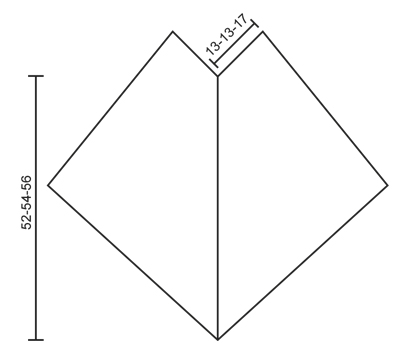
|
|
Dokončili jste tento model?Pak označte své fotky tagem #dropspattern nebo je pošlete do galerie #dropsfan. Potřebujete s tímto návodem poradit?Otevřete-li si návod na stránce garnstudio.com, najdete tam 18 výukových video-ukázek, Komentáře/Dotazy a další užitečné informace. © 1982-2025 DROPS Design A/S. Vyhrazujeme si veškerá práva. Tento dokument, včetně všech jeho dílčích částí, podléhá autorským právům. Podrobnější komentář k možnostem užití našich návodů najdete dole pod každým návodem na našich stránkách. |







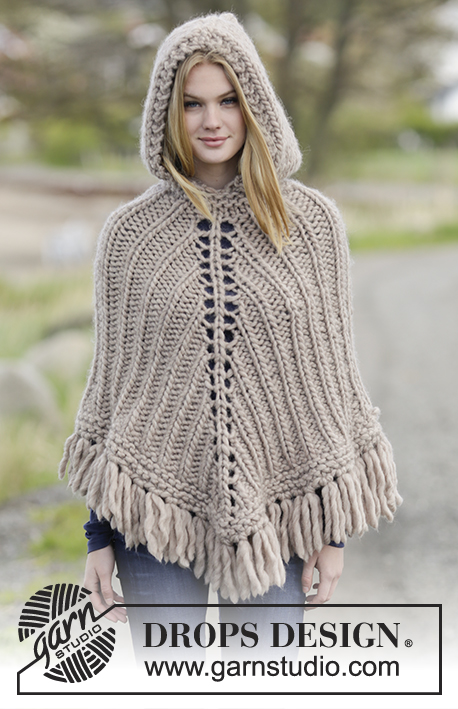
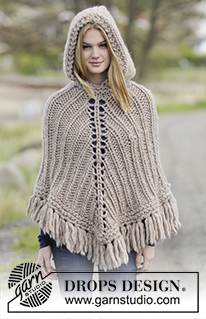



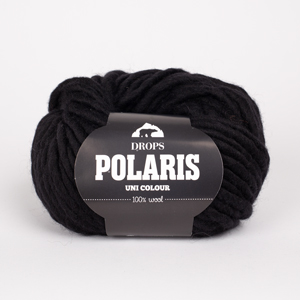
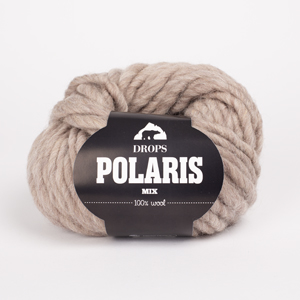



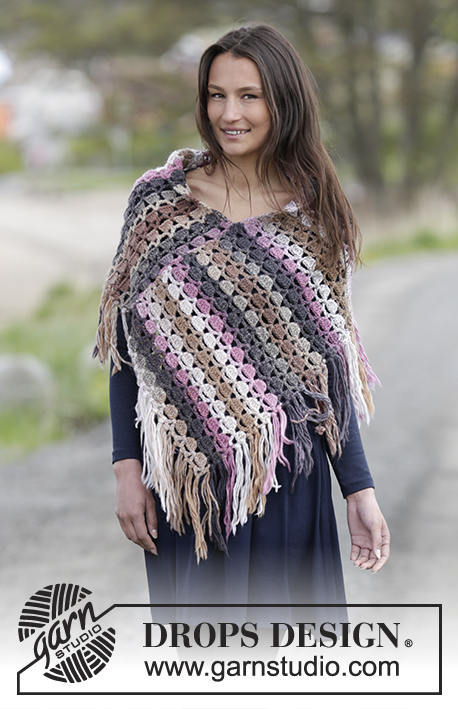



































Přidejte komentář k návodu DROPS Extra 0-1221
Rádi bychom věděli, co si o tomto modelu myslíte!
Pokud se chcete na něco zeptat, dbejte prosím na to, abyste ve formuláři níže vybrali správnou kategorii - díky tomu se dříve dozvíte, co potřebujete vědět. Povinná pole jsou označena *.